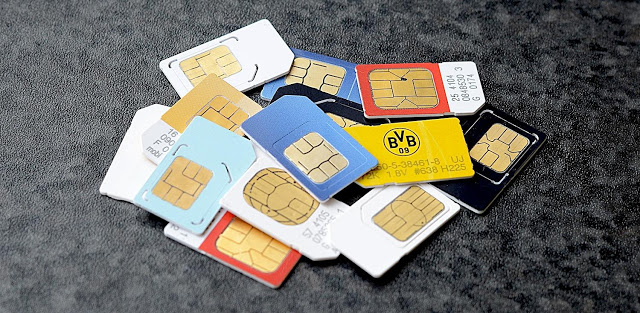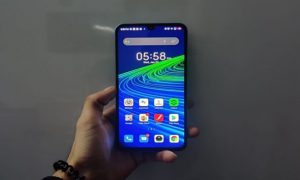While eSIM is not a new term that you might be hearing about, iSIM is something that you might think could be a mispronunciation. But, no, this actually exists and it is better than eSIMs. Qualcomm recently announced it is bringing iSIM to smartphones with future Snapdragon chips. The Snapdragon 8 Gen 2 SoC has gained support for it and millions of smartphone users will be able to use iSIM in the near future. But, what exactly is this, what are the advantages, and how is it different from eSIM? Here is a detailed explanation of everything.
What is eSIM?
eSIMs are embedded directly into a phone’s hardware, and are included in a separate chip. Though, this is smaller than physical SIM cards and free up physical space in phones that would otherwise be occupied by a SIM card slot. This allows manufacturers to design sleeker and more compact devices while retaining the same or even improved functionality.
How to enable eSIM?
People can always go to their respective network operator’s offline store or use their app to upgrade to eSIM and initiate the eSIM request. Do keep in mind that the process to activate or enable an eSIM is simple but is different from operator to operator.
eSIM: What phones are supported?
Apple devices such as iPhone XR, iPhone XS, iPhone XS Max, iPhone 11 series, iPhone SE series, iPhone 12 series, iPhone 13 series, iPhone 14 lineup, and all iPhone 15 models, are applicable for this tech. The support for eSIM in Android phones is less. These include Samsung Galaxy Z Flip, Galaxy Fold, Galaxy Note 20 Ultra, Galaxy Note 20,
Galaxy Z Fold 2, Galaxy S21 series, Galaxy S20 series, Galaxy Z Fold 3, Galaxy Z Flip 3, Galaxy S22 series, Galaxy S23 lineup, Galaxy Z Fold 4, and Galaxy Z Flip 4.
Some of the other eSIM-supported devices are Motorola Razr, Motorola Next Gen Razr, Motorola Edge 40, Motorola Razr 40 series, Nokia G60, Nokia X30, and Vivo X90 Pro. The same is also the case with the Google Pixel 3 and above versions.
Note: For Apple devices, eSIM is supported on iOS version 12.1 or higher. For Samsung, Google, Motorola, Nokia and Vivo devices, one will have to upgrade to the latest software version on these eligible handsets and make it eSIM ready.
eSIM: Advantages
-eSIMs eliminate the need for physical SIM cards and trays, resulting in more compact device designs. This can lead to sleeker, slimmer devices.
-It can be provisioned remotely, eliminating the need for a physical SIM card swap. This is particularly beneficial for users who travel frequently or need to switch carriers often, as they can change their mobile plan or carrier via an app or an online portal, offering greater flexibility and convenience.
-Some eSIMs can store multiple profiles, enabling users to switch between personal and business mobile plans or different carriers with ease.
-They can offer improved security features as well, making it harder for unauthorized access or tampering, which can be beneficial for protecting sensitive data.
Also Read : Amazon Pay introduces EMI on RuPay Credit Cards to make festive shopping more affordable
eSIM: Disadvantages
-The primary drawback of an eSIM arises when you frequently switch devices. Unlike a physical SIM card that can be easily transferred to a new phone, the eSIM activation process necessitates repeating the setup procedure each time you change devices.
What is iSIM?
iSIM is the same as the eSIM, but it is integrated into a chipset and doesn’t require an additional chip to operate. Qualcomm claims that an iSIM is 100x smaller than a nano SIM card. It is currently only available with Snapdragon 8 Gen 2 SoC.
iSIM: Advantages
-Qualcomm, the popular chip maker for Snapdragon-powered phones, says iSIM technology outperforms eSIMs and Nano SIM cards, offering significantly enhanced power efficiency, ultimately leading to improved battery life.
-Its primary benefit is that it eliminates the need for a SIM card slot, allowing space to be used by something else, like a better speaker or an additional vibration motor.
-It also makes the phone more resistant to dust and water. The other benefits are similar to eSIM.
Why not just simply use physical SIM cards?
The transition from traditional physical SIM cards and trays to eSIMs and iSIMs offers significant advantages in the realm of mobile device design and connectivity.
-With no physical SIM components, phone companies are able to manufacture more compact and portable devices.
-This also boosts their durability by reducing their susceptibility to dust and water damage.
-eSIMs and iSIMs also make more space for companies to add other components in the device.
-eSIMs and iSIMs can work with multiple mobile network operators, offering users the flexibility to switch between carriers without needing to physically change SIM cards. They can also help reduce complexity in the manufacturing and supply chain.
-Travelers can easily switch to local carriers when abroad without the hassle of purchasing and inserting a physical SIM card. This can result in cost savings and a more convenient experience for tourists and business travelers.
Is there a phone with iSIM support so far?
As of now, there is no phone that has support for this. But, it is being said that the smartphone companies are exploring this feature and that we could soon see phones offer this it people. If reports are to be believed, around 300 million iSIM phones, including future Samsung Galaxy phones, are said to receive support for the iSIM tech and the goal could be achieved by 2030, according to Qualcomm.



































